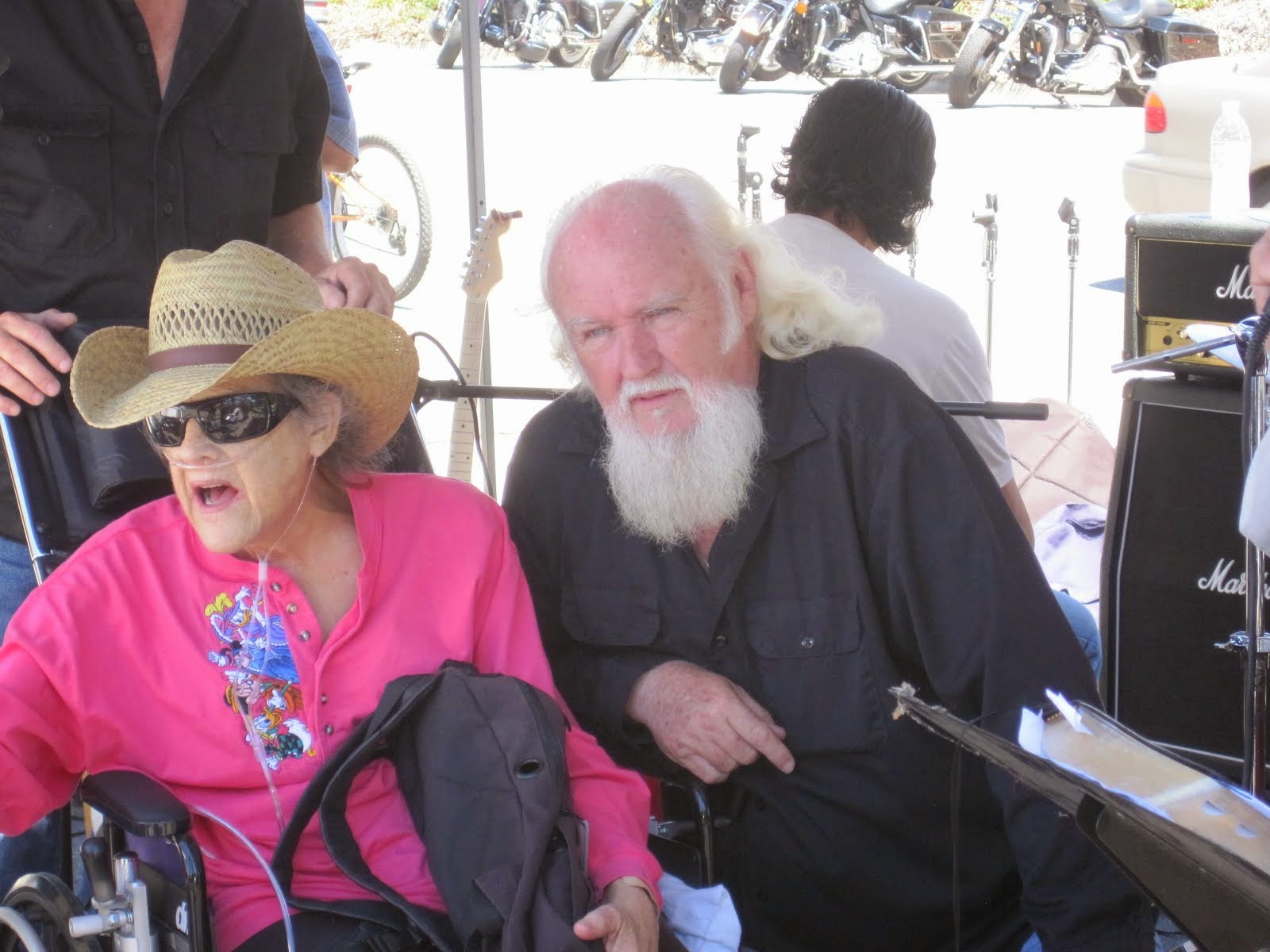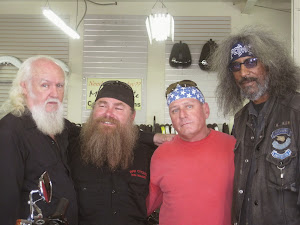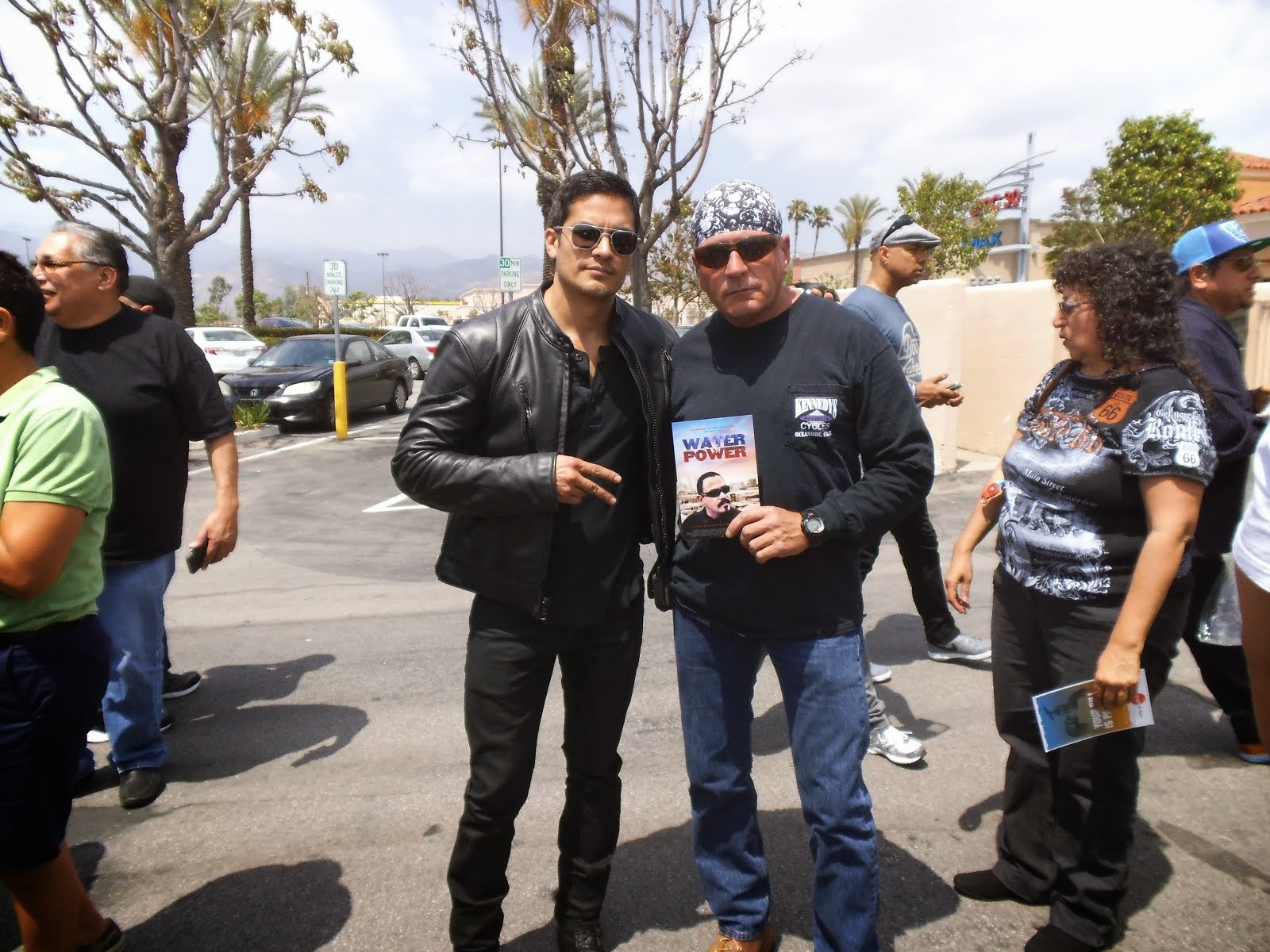OFF THE WIRE
Thank you for your email regarding Administrator Strickland’s testimony on the National Highway Traffic Safety Administration’s (NHTSA) fiscal year 2011 budget, before the House Committee on Appropriations, Subcommittee on Transportation, Housing and Urban Development, and Related Agencies. In your email you ask about his testimony concerning motorcycle safety and motorcycle helmet use.
The agency’s motorcycle safety program is a comprehensive effort that focuses on both crash and injury prevention, specifically increasing the use of DOT-compliant motorcycle helmets, reducing the incidence of impaired riding, increasing proper licensure of riders, increasing rider participation in motorcycle training courses and improving driver awareness of motorcyclists.
The core component of our program has not changed; it is to increase helmet use. This means that NHTSA recognizes that no other single countermeasure offers a comparable body of supporting scientific evidence confirming its potential for saving the lives of motorcyclists. With finite resources and the severity of the motorcycle fatality problem, we need to focus efforts on countermeasures that are known to be most effective. As Administrator Strickland stated at the House hearing, there is a direct correlation between helmet use and motorcycle fatalities. In response to a question asked by Congressman Olver, he stated “Anything that the Congress does that would support the movement of riders into helmets would be efficacious of safety.”
Under Administrator Strickland’s leadership, NHTSA will continue a comprehensive motorcycle safety program focusing on crash and injury prevention and the core of the program will be to increase helmet use. In addition, we will support and implement any program Congress determines necessary to reach our mutual goal of preventing motorcycle fatalities.Thank you for your letter and the opportunity to explain Administrator Strickland’s congressional testimony. I look forward to working with your organization and others on evidence-based strategies to reduce motorcycle fatalities
Diane E. Wigle
Chief, Safety Countermeasures Division
National Highway Traffic Safety Administration
Dear Ms. Wigle:
As a motorcyclist for many years, it truly bothers me that NHTSA does not look at the "big" picture, and uses the band-aid approach to motorcycle safety.
Most helmets aren't even tested any longer, a lot have been recalled, and those that have been tested (less than 7%) have only been tested for one point of impact (the very top of the head), and only at speeds of 13.7 to 15 MPH maximum. A rider is only traveling at those speeds when accelerating or when slowing down.
Not to mention most helmet manufacturers have left the United States shores to avoid liability claims. Oh, and is there a list of approved helmets that NHTSA's going to put out?
How, pray tell, can you legislate this piece of so-called safety equipment that hasn't been proven to be safe be legislated as mandatory wear? And where else in society is this type of thinking practiced? No where that I'm aware of!
It's a proven fact that motorcycle safety, education and awareness not only to motorcyclists but to the general public will save more lives than any band-aid "wear a helmet" approach will.
For the past eleven years, each Monday through Friday I compile a newsletter that goes out to motorcyclists all over the country, and each day I read about a Right of Way (ROW) infraction that kills the motorcyclist, even though he was wearing a helmet.
Would you be so kind as to explain what exactly is the correlation of helmets to accidents; because I fail to see how, if drivers continue to remove a rider's ROW and maim, injure and kill motorcyclists, why riders should be held accountable for other's wrong actions! This type of thinking would be shot down anywhere else in society, but yet for motorcycling, it isn't.
I just don't understand how a piece of equipment that hasn't been proven safe must be mandated to wear by riders to save them from others' actions! Doesn't it make more sense to increase education to all, to avoid accidents all together? And how can you penalize riders for not wearing a piece of safety equipment that hasn't been proven safe?
Helmets do not always save lives, education does. Unless drivers are informed that a motorcycle is a motor vehicle and has the right to share the road, and are instructed as to how to "look" for motorcycles and interact with them on US roadways, then I'm afraid your band-aid approach will prove nothing; and more riders will die!
Sincerely,
Betsy
skip to main |
skip to sidebar




Bill & Annie

Art Hall & Rusty


NUFF SAID.......


































































OOHRAH

ONCE A MARINE,ALWAYS A MARINE

GIVING BACK


MOUNT SOLEDAD














BIKINI BIKE WASH AT SWEETWATER










FRIENDS





BILL,WILLIE G, PHILIP










GOOD FRIENDS


hanging out

brothers


GOOD FRIENDS

Good Friends

Hanging Out




Bill & Annie
Art Hall & Rusty
Art Hall & Rusty


NUFF SAID.......



















NUFF SAID......



























Mount Soledad




BALBOA NAVAL HOSPITAL
RUSTY DANNY

ANNIE KO PHILIP

PHILIP & ANNIE

OUT & ABOUT

OOHRAH...

OOHRAH
ONCE A MARINE,ALWAYS A MARINE

ONCE A MARINE,ALWAYS A MARINE
American Soldier Network GIVING BACK

GIVING BACK
CATHY & BILL
PHILIP & DANNY & BILL

MOUNT SOLEDAD
bills today
EMILIO & PHILIP
WATER & POWER
WATER & POWER
bootride2013



BIKINI BIKE WASH AT SWEETWATER







ILLUSION OPEN HOUSE

FRIENDS


GOOD FRIENDS



BILL,WILLIE G, PHILIP









GOOD FRIENDS

GOOD FRIENDS
Friends
- http://www.ehlinelaw.com/losangeles-motorcycleaccidentattorneys/
- Scotty westcoast-tbars.com
- Ashby C. Sorensen
- americansoldiernetwork.org
- blogtalkradio.com/hermis-live
- davidlabrava.com
- emiliorivera.com/
- http://kandymankustompaint.com
- http://pipelinept.com/
- http://womenmotorcyclist.com
- http://www.ehlinelaw.com
- https://ammo.com/
- SAN DIEGO CUSTOMS
- www.biggshd.com
- www.bighousecrew.net
- www.bikersinformationguide.com
- www.boltofca.org
- www.boltusa.org
- www.espinozasleather.com
- www.illusionmotorcycles.com
- www.kennedyscollateral.com
- www.kennedyscustomcycles.com
- www.listerinsurance.com
- www.sweetwaterharley.com

Hanging out

hanging out
Good Friends

brothers
GOOD FRIENDS

EMILIO & SCREWDRIVER

GOOD FRIENDS
Danny Trejo & Screwdriver

Good Friends
Navigation
Welcome to Bikers of America, Know Your Rights!
“THE BIKERS OF AMERICA, THE PHIL and BILL SHOW”,
A HARDCORE BIKER RIGHTS SHOW THAT HITS LIKE A BORED AND STROKED BIG TWIN!
ON LIVE TUESDAY'S & THURDAY'S AT 6 PM P.S.T.
9 PM E.S.T.
CATCH LIVE AND ARCHIVED SHOWS
FREE OF CHARGE AT...
BlogTalkRadio.com/BikersOfAmerica.
Two ways to listen on Tuesday & Thursday
1. Call in number - (347) 826-7753 ...
Listen live right from your phone!
2. Stream us live on your computer: http://www.blogtalkradio.com/bikersofamerica.
A HARDCORE BIKER RIGHTS SHOW THAT HITS LIKE A BORED AND STROKED BIG TWIN!
ON LIVE TUESDAY'S & THURDAY'S AT 6 PM P.S.T.
9 PM E.S.T.
CATCH LIVE AND ARCHIVED SHOWS
FREE OF CHARGE AT...
BlogTalkRadio.com/BikersOfAmerica.
Two ways to listen on Tuesday & Thursday
1. Call in number - (347) 826-7753 ...
Listen live right from your phone!
2. Stream us live on your computer: http://www.blogtalkradio.com/bikersofamerica.
Good Times
Hanging Out

Key Words
- about (3)
- contact (1)
- TENNESSEE AND THUNDER ON THE MOUNTAIN (1)
- thinking (1)
- upcoming shows (2)
Blog Archive
-
▼
2010
(4242)
-
▼
May
(300)
- The Truth about SB1070 and the New Arizona Law
- Minipulated News
- OFF THE WIREHONOR RECIPIENT, EL CAJON, CA, THURSDA...
- Outlaws club member pleads in drug investigation
- Sons of Anarchy: Season Two Arrives on DVD and Blu...
- ABATE LOCAL 6 Dates and info for the coming month
- “THE BIKERS OF AMERICA,THE PHIL AND BILL SHOW”
- MEcalm
- New York Motorcycle Club Shut Down
- 1,000 bikers rally, seek reforms in Ottawa Hills
- The Feds’ Illegal/Unauthorized/Murderous War on Bi...
- Biker Lowdown Radio Show Bike Night
- Ottawa Hills officer found guilty in biker shooting
- Ohio Bike Week ready to roar
- Highwaymen racketeering trial heads to jury
- Manville officials mull stricter regulations after...
- “Bikers Against Discrimination” Executive Director...
- Why Are Barney Phife Cops Being Outfitted With Ges...
- THAN YOU TO ALL U.S. SERVICEMEN/WOMEN WHO PAID THE...
- No title
- Run for the Wall: Veteran rides to D.C. to honor t...
- From the MASS AG's office regarding auto insurance
- Two Quick & Easy Cross-Examination Tips
- Advice for everyone..
- business meeting
- ABATE of Washington
- Sin City Crew need`s our help and support
- Action Alert: SB 435 - Motorcycle Smog Bill - Sche...
- Speculation about Charleston crash
- Motorcycle rally coming to Simpsonville
- Highwaymen lawyers, prosecutors clash in closing a...
- Hell on wheels?
- We Care Ride 2010
- Thoughts from Fran
- Readin', writin' and ridin'
- OF THE WIREhttp://editorial.autos.msn.com/blogs/au...
- The Fight Like A Girl Poker Run and Games Weekend
- Harley-Davidson Museum Hosts Evel Knievel Exhibit
- Press Release ABATE of Florida
- The Legendary Buffalo Chip to Host World Famous Ra...
- illegal video
- Sand on the road
- Two Quick & Easy Cross-Examination Tips
- "New York Rider - B.A.D. Day on the Mountain"
- Bike club ready for OC return during holiday
- recording in public
- EXCITING FULL THROTTLE NATION SHOW THIS WEEK!
- Helmets Can Save Your Life *Motorcycles Articles
- **Calvin Janisch recalled as having it all
- Run for the Wall coming to town
- ATTIKA is back at the Viper Room again June 11th.
- CHP highlights motorcycle safety *
- WASHINGTON DC:Rolling Thunder 2010 Memorial Day We...
- Breaking Bad: CA vs. the Other States
- Defective Helmet
- Simpsonville to add extra patrols for motorcycle r...
- 1,000 bikers rally, seek reforms in Ottawa Hills
- Hells Angels Jammin' with 81
- Motorcycle rally coming to Simpsonville
- Motorcyclists protest Quebec insurance hikes
- SB 435 scheduled for vote
- ALERT: California Volunteers Needed
- California vs Texas....
- NHTSA Update
- more motorcycle awareness messages
- Rolling Thunder means look out for motorcycles
- Australia - Second Time he has done this
- Myrtle Beach area officials lay out Bikefest plans
- Do You Know Where Your EPA Stamp Is?
- Highwaymen lawyers, prosecutors clash in closing a...
- Hell on wheels?
- Miami-Dade police hunt for driver in hit-run with ...
- RECALL:ADVANCED CARBON COMPOSITES EXT MOTORCYCLE H...
- Phil Horne has become quite a champion
- Janet Hogan says "THANKS !"
- Terrorist attack in Missouri
- New Details in Fatal Motorcycle Crash
- New York Freedom Riders New York Legislation and n...
- Randolph native and Vietnam veteran killed outside...
- Driver guilty in death of Haverhill couple on cycle
- Ohio Bike Week ready to roar
- Like minded thinkers!
- Motorcyclists Need To Raise A Stink When Cars Hit ...
- Motorcyclists gather in Mesa to raise awareness
- New Details in Fatal Motorcycle Crash
- Maryland Citizens Face Felony Charges for Recordin...
- Motorcycle rally will benefit troops
- Why Are Barney Phife Cops Being Outfitted With Ges...
- A mother’s nightmare
- No bail for men charged in officer's death Suspect...
- Make sure officer did not die in vain
- Slain police officer was trying to save his neighb...
- Motorcycle dealers grit teeth through bumpy downturn
- Keeping motorcycle safety on track
- Pocono Mountains Buffalo Soldiers Motorcycle Club ...
- Hot Leathers: Biker Rally at the Rock 3
- Moon's Custom Cycles closes in Ignacio
- B.C. appeal court sides with Hells Angel associate...
- Local BACA Members Make Big Impact
- Sin City Crew need our help and support
-
▼
May
(300)
Bikers of America, Know Your Rights!... Brought to you by Phil and Bill
Philip, a.k.a Screwdriver, is a proud member of Bikers of Lesser Tolerance, and the Left Coast Rep
of B.A.D (Bikers Against Discrimination) along with Bill is a biker rights activist and also a B.A.D Rep, as well, owner of Kennedy's Custom Cycles
